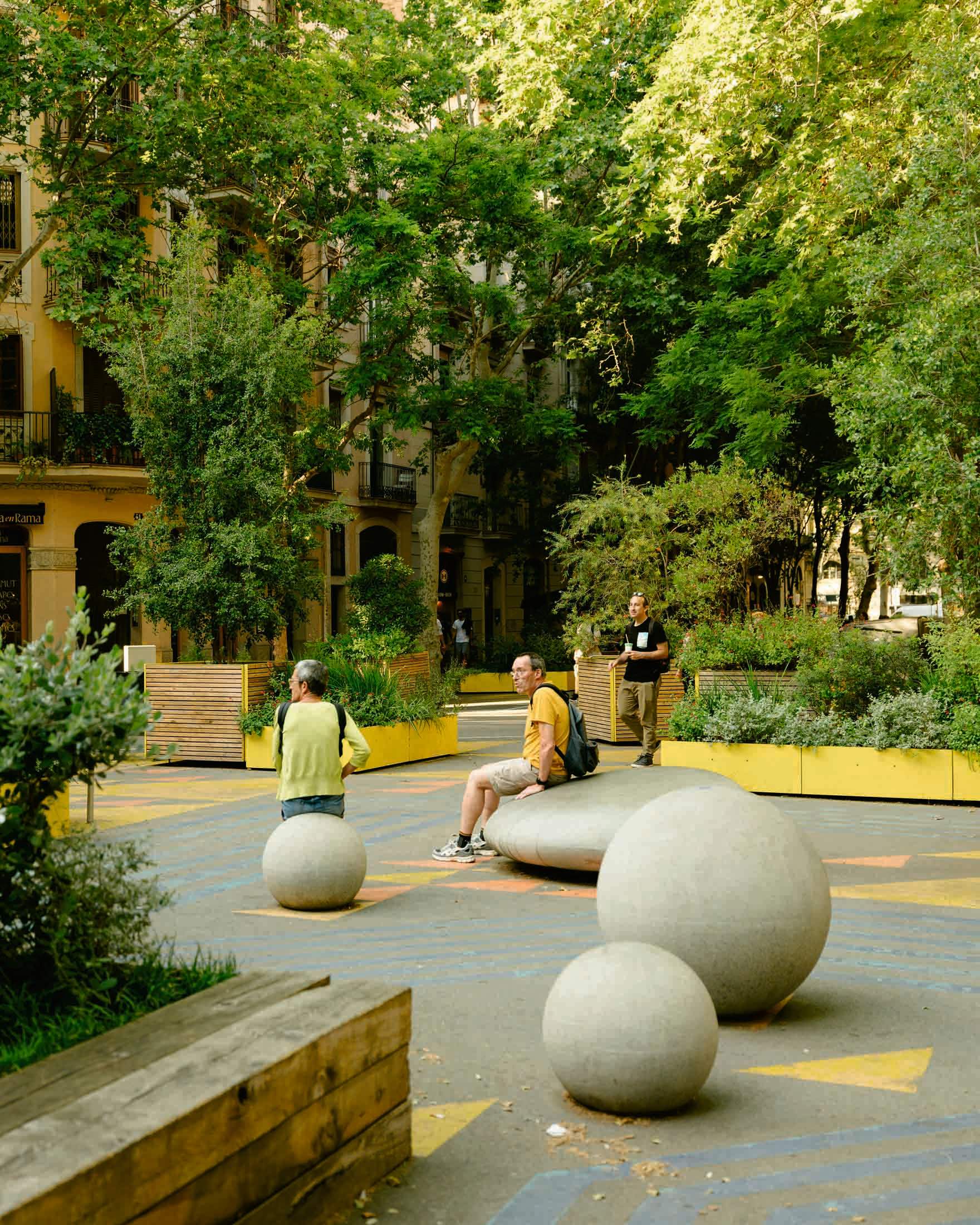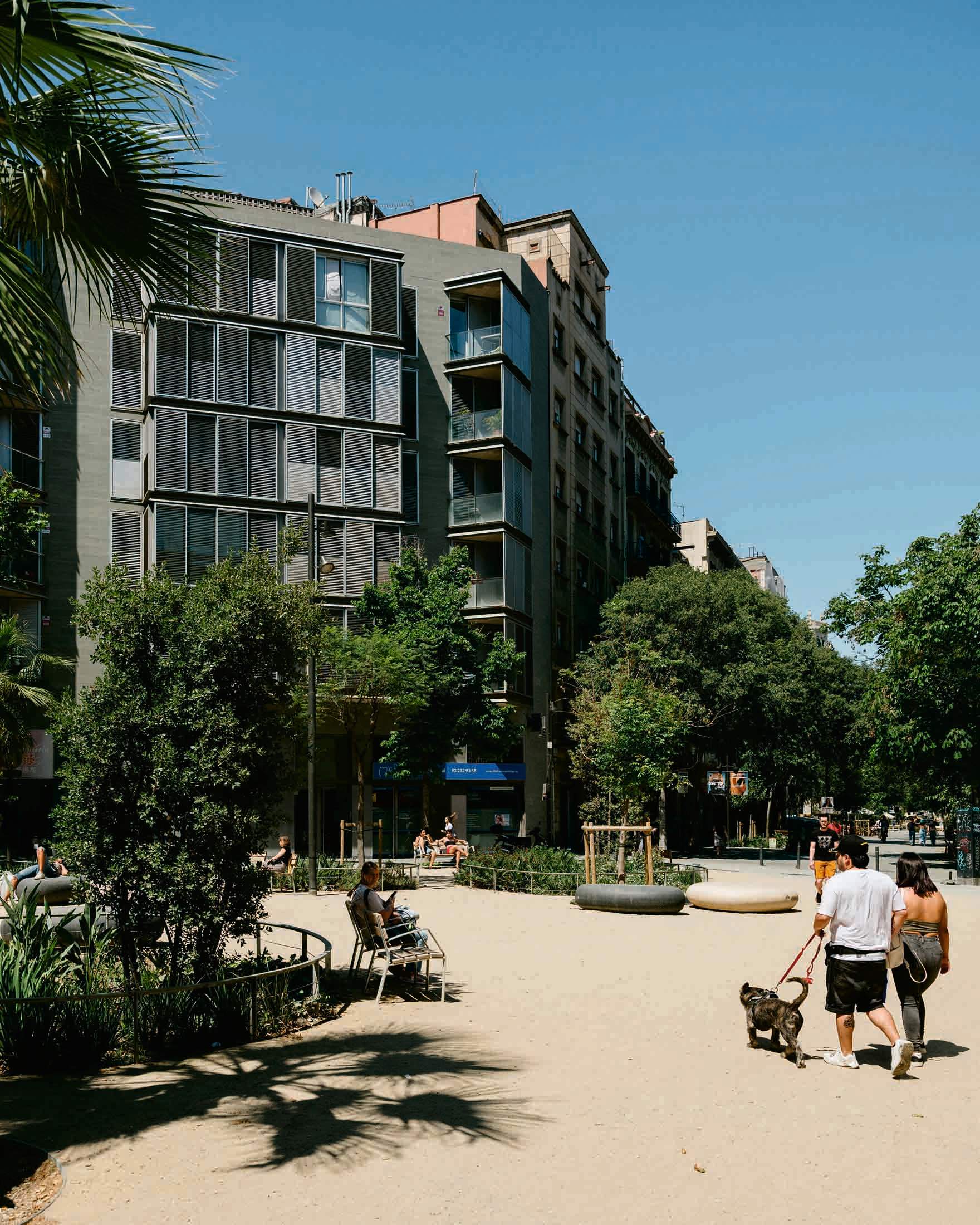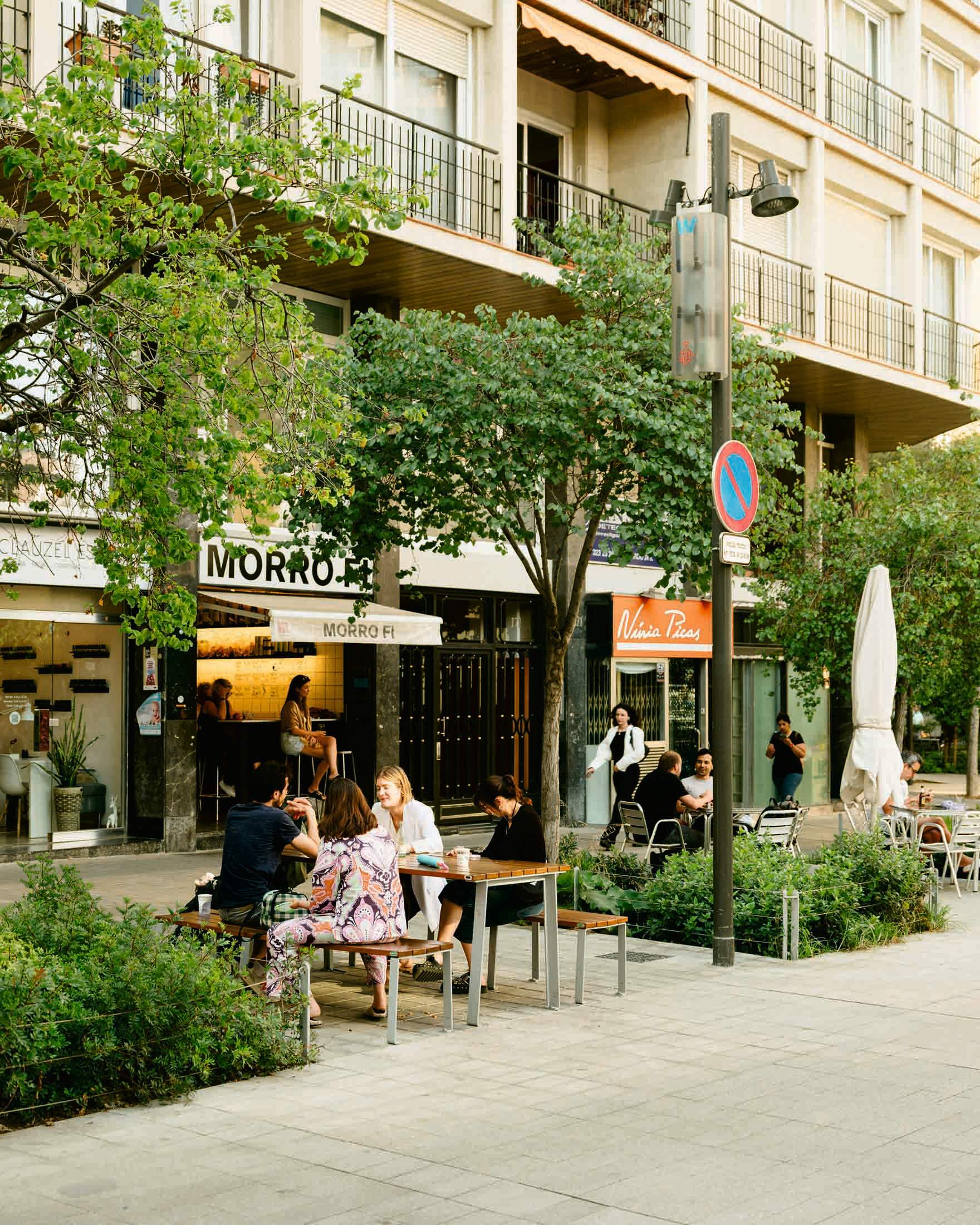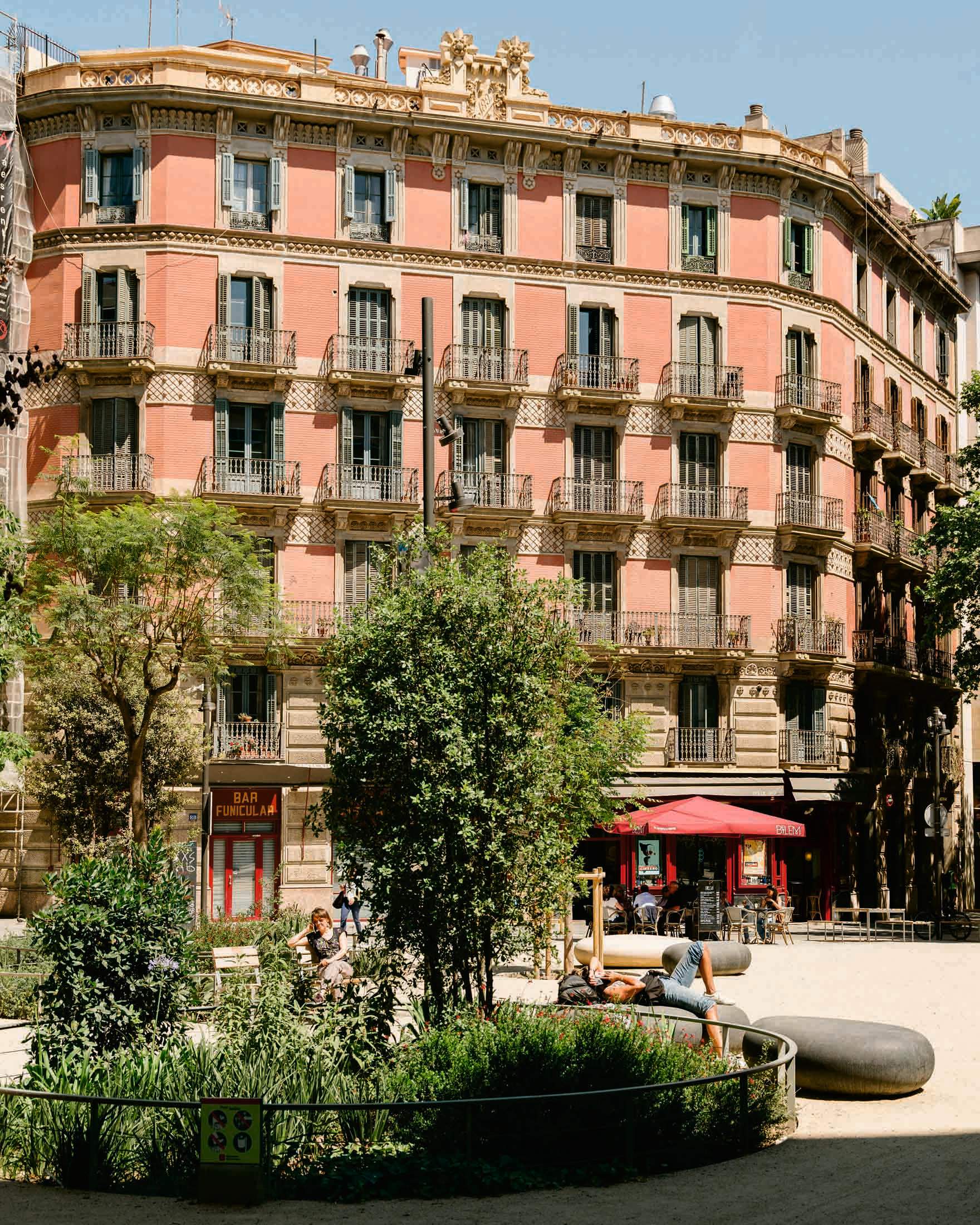Superilles / Barcelona
Urbanism
Barcelona is amid a regreening revolution, with peaceful scenes of nature replacing the sound and fury of the city.
Significant steps have been taken in recent years to make Barcelona more walkable. One of the most prominent efforts is the superilles project, which has pedestrianised interconnecting streets to create clusters known as “super blocks”. The Eixample district, with its grid of diagonal corners and wider thoroughfares, continues to expand on the founding spirit of its forward-thinking engineer Ildefons Cerdà. As far back as the 1860s, Cerdà was championing the social benefits of public parks and proximity to shops and services, even coining the term “urbanisation”.




A notable new green hub is the intersection of Carrer Girona and Carrer del Consell de Cent, which has swapped traffic lanes for shady terraces, children’s play equipment and abundant gardens, where sculptural benches provide a place to sit and soak in the circadian scenes. Further afield, the Port Olimpic renewal is revitalising the beachfront while the historic tinglados buildings in the boatshed district barracas have been restored into world-class exhibition spaces. More recently, the ambitious effort to bury a busy intersection under a tree-filled park is nearing completion in Plaça de les Glòries Catalanes.
Beyond these larger-scale visions, getting to know Barcelona at a slower, walkable pace opens opportunities to stumble upon a quaint café or shop. When it comes to concerns about its residents’ wellbeing, Barcelona continues to be on the front foot.


